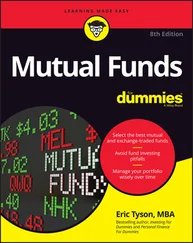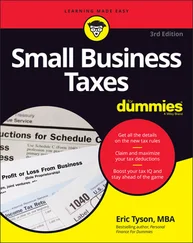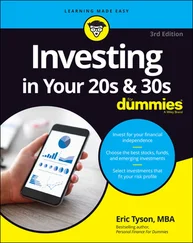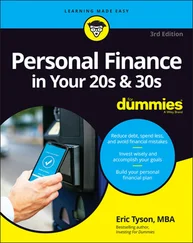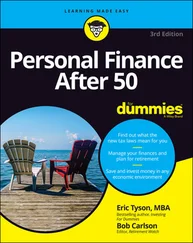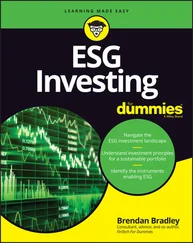Diversify. Investors who seek growth invest in securities such as stocks. Placing significant amounts of your capital in one or a handful of securities is risky, particularly if the stocks are in the same industry or closely related industries. To reduce this risk, purchase stocks in a variety of industries and companies within each industry. (See Part 2for details.)THE LOWDOWN ON LIQUIDITYThe term liquidity refers to how long and at what cost it takes to convert an investment into cash. The money in your wallet is considered perfectly liquid — it’s already cash.Suppose that you invested money in a handful of stocks. Although you can’t easily sell these stocks on a Saturday night, you can sell most stocks quickly through a broker for a nominal fee any day that the financial markets are open (normal working days). Mutual funds offer daily liquidity any day the financial markets are open.Real estate is generally much less liquid than stock. Preparing your property for sale takes time, and if you want to get fair market value for your property, finding a buyer may take weeks or months. Selling costs (agent commissions, fix-up expenses, and closing costs) can approach 8 to 10 percent of the home’s value.A privately run small business is among the least liquid of the better growth investments that you can make. Selling such a business typically takes longer than selling most real estate.So that you’re not forced to sell one of your investments that you intend to hold for long-term purposes, keep an emergency reserve of three to six months’ worth of living expenses in a money market account. Also, consider investing some money in highly rated bonds (see Chapter 7), which pay higher than money market yields without the high risk or volatility that comes with the stock market.
Hire someone to invest for you. The best funds (see Chapter 8) offer low-cost, professional management and oversight as well as diversification. Stock funds typically own 25 or more securities in a variety of companies in different industries. In Part 3, I explain how you can invest in real estate in a similar way (that is, by leaving the driving to someone else).
Purchasing-power risk (also known as inflation risk)
Increases in the cost of living (that is, inflation) can erode the value of your retirement resources and what you can buy with that money — also known as its purchasing power. When Teri retired at the age of 60, she was pleased with her retirement income. She was receiving a $1,600-per-month pension and $2,400 per month from the money that she had invested in long-term bonds. Her monthly expenditures amounted to about $3,000, so she was able to save a little money for an occasional trip.
Fast-forward 15 years. Teri still receives $1,600 per month from her pension, but now she gets only $1,800 per month of investment income, which comes from some certificates of deposit. Teri bailed out of bonds after she lost sleep over the sometimes roller-coaster-like price movements in the bond market. Her monthly expenditures now amount to approximately $4,000, and she uses some of her investment principal (original investment). She’s terrified of outliving her money.
Teri has reason to worry. She has 100 percent of her money invested without protection against increases in the cost of living. (Her Social Security does have inflation adjustments.) Although her income felt comfortable at the beginning of her retirement, it doesn’t work at age 75, and Teri may easily live another 15 or more years.
The erosion of the purchasing power of your investment dollar can, over longer time periods, be as bad as or worse than the effect of a major market crash. Table 2-2shows the effective loss in purchasing power of your money at various rates of inflation and over differing time periods.
TABLE 2-2Inflation’s Corrosive Effect on Your Money’s Purchasing Power
| Inflation Rate |
10 Years |
15 Years |
25 Years |
40 Years |
| 2% |
–18% |
–26% |
–39% |
–55% |
| 4% |
–32% |
–44% |
–62% |
–81% |
| 6% |
–44% |
–58% |
–77% |
–90% |
| 8% |
–54% |
–68% |
–85% |
–95% |
| 10% |
–61% |
–76% |
–91% |
–98% |
 As a financial counselor, I often saw skittish investors try to keep their money in bonds and money market accounts, thinking they were “playing it safe.” The risk in this strategy is that your money won’t grow enough over the years for you to accomplish your financial goals. In other words, the lower the return you earn, the more you need to save to reach a particular financial goal.
As a financial counselor, I often saw skittish investors try to keep their money in bonds and money market accounts, thinking they were “playing it safe.” The risk in this strategy is that your money won’t grow enough over the years for you to accomplish your financial goals. In other words, the lower the return you earn, the more you need to save to reach a particular financial goal.
A 30-year-old wanting to accumulate $500,000 by age 65 would need to save $440 per month if she earns a 5 percent average annual return, but she needs to save only $170 per month if she earns a 9 percent average return per year. Younger investors need to pay the most attention to the risk of generating low returns, but so should younger senior citizens. At the age of 65, seniors need to recognize that a portion of their assets may not be used for a decade or more from the present.
INFLATION RAGIN’ OUTTA CONTROL
You think 6, 8, or 10 percent annual inflation rates are bad? How would you like to live in a country that experienced that rate of inflation in a day? Too much money in circulation chasing after too few goods causes high rates of inflation.
A government that runs amok with the nation’s currency and money supply usually causes excessive rates of inflation — dubbed hyperinflation. Over the decades and centuries, hyperinflation has wreaked havoc in more than a few countries.
What happened in Germany in the late 1910s and early 1920s demonstrates how bad hyperinflation can get. Consider that during this time period, prices increased nearly one-billionfold! What cost 1 Reichsmark (the German currency in those days) at the beginning of this mess eventually cost nearly 1 billion Reichsmarks. People had to cart around so much currency that at times they needed wheelbarrows to haul it! Ultimately, this inflationary burden was too much for the German society, creating a social climate that fueled the rise of the Nazi party and Adolf Hitler.
During the 1990s, a number of countries, especially many that made up the former USSR and others such as Brazil and Lithuania, got themselves into a hyperinflationary mess with inflation rates of several hundred percent per year. In the mid-1980s, Bolivia’s yearly inflation rate exceeded 10,000 percent.
Governments often try to slap on price controls to prevent runaway inflation (President Richard Nixon did this in the United States in the early 1970s), but the underground economy, known as the black market, usually prevails.
 Your ability to earn money is most likely your single biggest asset or at least one of your biggest assets. Most people achieve what they do in the working world through education and hard work. By education, I’m not simply talking about what one learns in formal schooling. Education is a lifelong process. I’ve learned far more about business from my own front-line experiences and those of others than I’ve learned in educational settings. I also read a lot. (In Part 5, I recommend books and other resources that I’ve found most useful.)
Your ability to earn money is most likely your single biggest asset or at least one of your biggest assets. Most people achieve what they do in the working world through education and hard work. By education, I’m not simply talking about what one learns in formal schooling. Education is a lifelong process. I’ve learned far more about business from my own front-line experiences and those of others than I’ve learned in educational settings. I also read a lot. (In Part 5, I recommend books and other resources that I’ve found most useful.)
Читать дальше
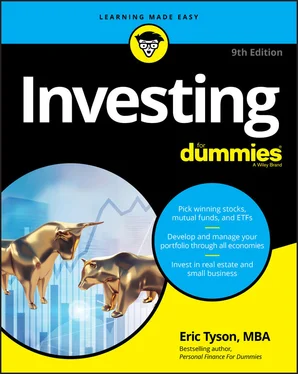
 As a financial counselor, I often saw skittish investors try to keep their money in bonds and money market accounts, thinking they were “playing it safe.” The risk in this strategy is that your money won’t grow enough over the years for you to accomplish your financial goals. In other words, the lower the return you earn, the more you need to save to reach a particular financial goal.
As a financial counselor, I often saw skittish investors try to keep their money in bonds and money market accounts, thinking they were “playing it safe.” The risk in this strategy is that your money won’t grow enough over the years for you to accomplish your financial goals. In other words, the lower the return you earn, the more you need to save to reach a particular financial goal.